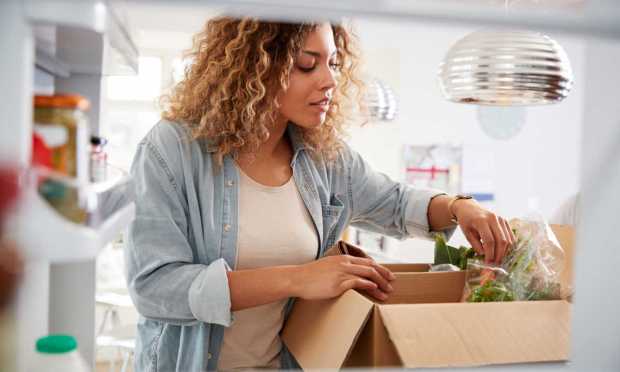Blue Apron Balances Commitment Phobia With Subscription Demand

In what could be seen as the latest wrinkle in the subscription commerce sector, Blue Apron said Monday (Nov. 7) that meal kits that stick to a subscription-only model could be losing valuable customers, including those who make purchases from the brand every week.
The comments from the meal kit provider came on a call with analysts to discuss the company’s third quarter 2022 financial results that it has learned, through its partnerships with online marketplaces Walmart and Amazon, that non-subscription offerings can help the firm reach new, high-value customers.
“Part of what we are seeing is, some people do continue to want to buy non-subscription, even if they’re buying every week,” CEO Linda Findley said. “That’s just something that they prefer to do, rather than committing to a subscription.”
This marketplace strategy has been underway throughout 2022. In June, the meal kit provider announced its partnership with Walmart to sell non-subscription kits and prepared meals on the mega-retailer’s site. In October, the brand followed this move up with a similar deal with Amazon, selling kits for one-time purchase on the eCommerce giant’s marketplace.
Yet for many consumers, subscription demand remains. Consider Amazon’s Subscribe & Save’s resilience in the face of shoppers’ mounting economic anxieties. For Blue Apron, in addition to driving purchases outside of subscriptions, these partnerships have also been proving effective at attracting subscribers.
“It has not become a significant portion of revenue yet. But I will say that we are seeing continued uptick, particularly with our new Amazon storefront,” Findley said, later noting, “we are seeing some conversion [from these partnerships] to subscriptions. But … it is still new enough that we wouldn’t necessarily reveal those numbers.”
Regarding those subscription-wary consumers, one way in which food subscriptions fall short of meeting their needs is through inaccessible pricing. Research from the May edition of PYMNTS’ Subscription Commerce Conversion Index, created in collaboration with subscription eCommerce platform sticky.io, which draws from a census-balanced survey of more than 1,900 U.S. adults earlier this year, finds that 56% of consumers would be interested in a grocery subscription if product prices were lower.
One way that food subscriptions could help address this concern is with special deals and discounts, but many players in the space have been hesitant to do so. Data from the September edition of the study, “The Subscription Commerce Conversion Index: The Challenge of Cheaters,” which drew from a survey of more than 200 U.S. retail subscription merchants, found that 93% of the top 30 offered discounts, compared to just 70% of middle-performing merchants and 42% of bottom performers. However, only 50% of grocery subscriptions offer discounts, well below the cross-industry average.
Get the study: The Subscription Commerce Conversion Index: The Challenge of Cheaters
In the meantime, with consumers still wary of committing to often costly subscriptions, Blue Apron is looking into “additional opportunities to expand these efforts,” considering additional digital channels through which it can reach more customers. For instance, the company recently started selling gift cards at Costco.
As of right now, the company is in something of a state of flux with these third-party partnerships, focusing both on their ability to drive subscriber acquisition and on their potential as revenue sources in their own right.
“So, we’re looking at ways that we can take some of those additional channels … including the Amazon announcement and our new Costco gift card sales channel, to increase our customer numbers going forward,” Findley said, “by converting them into subscribers and/or continuing to expand the non-subscription business.”
